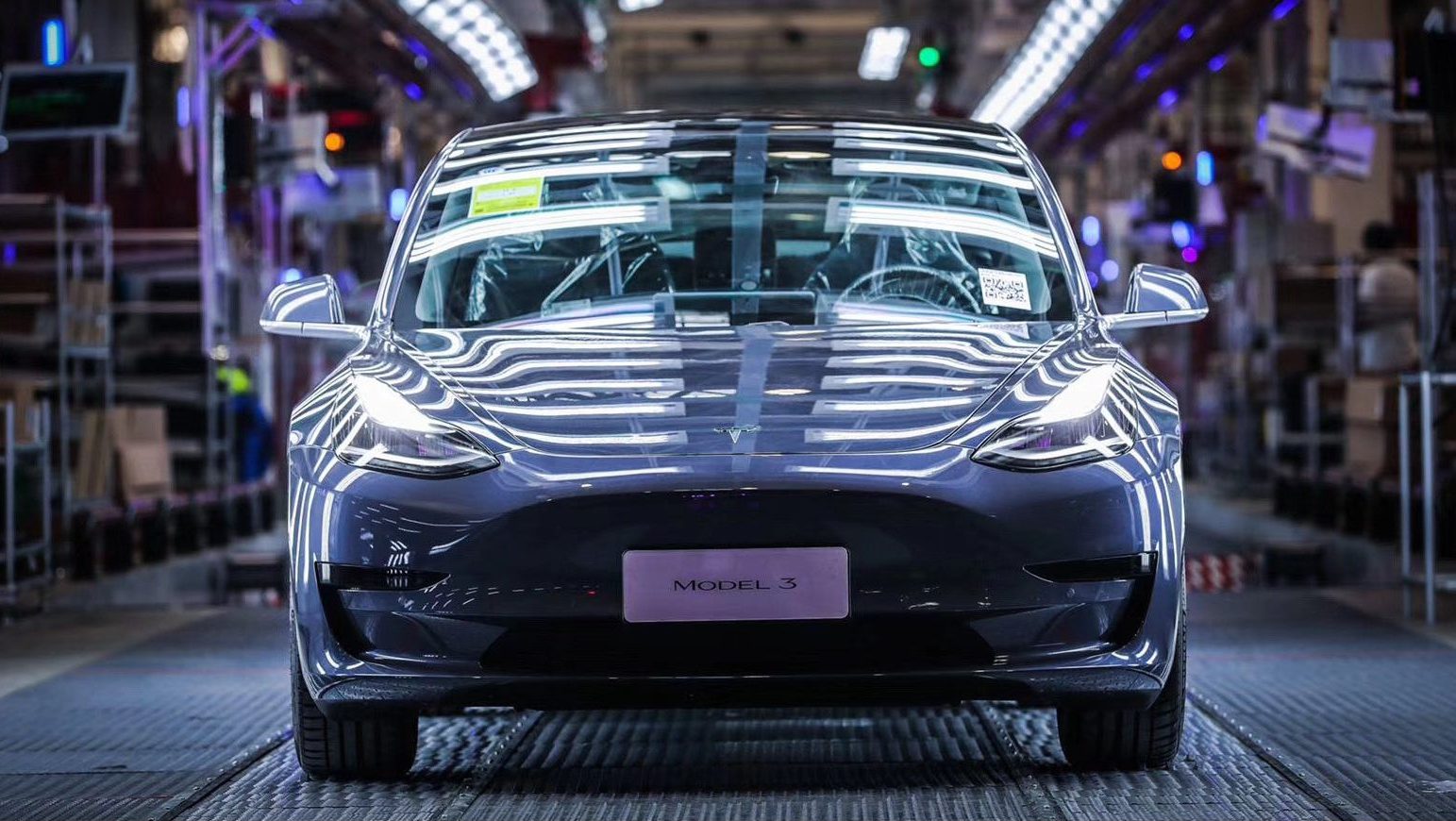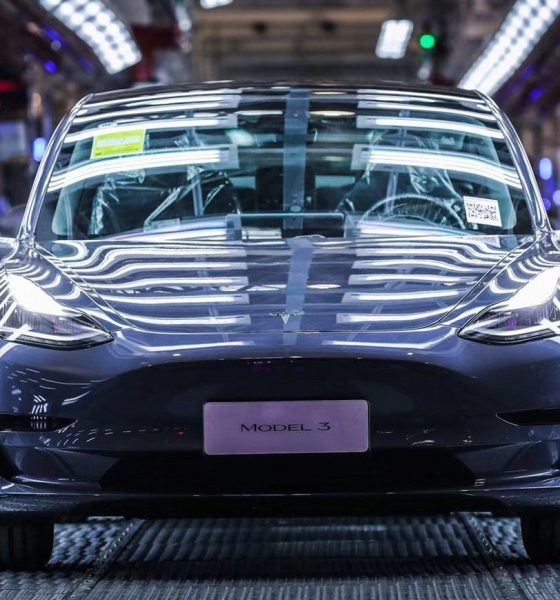

Investor's Corner
Top 10 questions Tesla (TSLA) investors want answered in the Q4 2019 earnings call
Tesla’s (NASDAQ:TSLA) retail and institutional investors are aggregating a number of inquiries that will potentially be addressed by the electric car maker’s executives in the upcoming Q4 2019 earnings call, which will be held later today, January 29, 2020. The questions are aggregated from verified TSLA shareholders by Say, a startup that aims to create and develop investor communication tools.
Using the platform, Tesla’s retail and institutional investors have been submitting and voting on inquiries they wish to be discussed and clarified by the electric car maker. Here are a number of notable questions that garnered a high number of votes from the company’s retail and institutional shareholders.
Retail Shareholders
- You set expectations that you would be feature complete on FSD by the end of 2019. Can you please provide an update on when we may see this with end users? Where are you in retrofitting the FSD computer to older models?
- Since solar is required for all new home construction in CA, do you have any substantial orders for Solarglass Roofs from any of the larger California homebuilders (KB Homes, etc) that you can share? What’s the 2020 target for the number of Solarglass roof installations in CA?
- Tesla’s vehicle delivery compound annual growth rate has increased each of the last 5 years and sits at 88% over the last 2 years. How should we think about that rate going forward? Will Tesla achieve that by expanding GF1-4, accelerating the pace of new Gigafactories, or both?
- How many CA owners are currently insured with Tesla Insurance? What’s the target for Tesla Insurance in 2020? When will you start to significantly leverage the data you have from Tesla fleet to lower your cost of coverage? Will we get premium discount for percentage of miles driven on AP?
- Will you release the Tesla Ride Hailing network/app before full autonomy and change the terms of Tesla Insurance to allow owners to be drivers on the network? If so, when will this happen? Might want to target California airports first. Also good place to add Superchargers.
Institutional Investors
- You have spoken previously about Shanghai Giga being 65% lower CAPEX per unit of capacity. Have you learnt to do anything better or differently from an OPEX perspective and if yes what kind of impact might we expect on the long-term gross margin?
- Given the recent run in the share price, why not raise capital now and substantially accelerate the growth in production (i.e. Gigafactories), investments in Supercharger and customer service?
- Can we please talk about cost control and OPEX sustainability in terms of growth vs gross profit growth? How did we achieve the recent OPEX trends and how should we think about OPEX needs as we grow both vehicles and geo workloads?
- Elon, given your public statements around the Maxwell acquisition and published research from Dalhousie University, do you expect a significant improvement in battery technology and further vertical integration by Tesla in the battery supply chain?
- Elon, can you give us an update on the Dojo project you talked about at Autonomy Day? Beyond that, any details on Tesla’s self-supervised learning efforts—along with how these efforts are helping Tesla achieve FSD capabilities—would be great.
Tesla is yet to fully confirm if it will be entertaining questions from Say in the upcoming Q4 earnings call, though the company has regularly addressed inquiries from retail shareholders in past quarters. By doing so, Tesla is essentially democratizing the process of communicating its earnings to shareholders and institutional investors. Such a strategy is yet another step away from convention, considering that traditional earnings calls usually feature exclusive questions from Wall Street analysts and the occasional member of the media.
Tesla’s fourth-quarter earnings call is expected to be held on Wednesday, January 29, 2020 at 3:30 p.m. Pacific Time (6:30 p.m. Eastern Time).
The full list of questions from TSLA’s retail and institutional investors listed on Say could be accessed here.

Investor's Corner
Tesla stock closes at all-time high on heels of Robotaxi progress

Tesla stock (NASDAQ: TSLA) closed at an all-time high on Tuesday, jumping over 3 percent during the day and finishing at $489.88.
The price beats the previous record close, which was $479.86.
Shares have had a crazy year, dipping more than 40 percent from the start of the year. The stock then started to recover once again around late April, when its price started to climb back up from the low $200 level.
This week, Tesla started to climb toward its highest levels ever, as it was revealed on Sunday that the company was testing driverless Robotaxis in Austin. The spike in value pushed the company’s valuation to $1.63 trillion.
Tesla Robotaxi goes driverless as Musk confirms Safety Monitor removal testing
It is the seventh-most valuable company on the market currently, trailing Nvidia, Apple, Alphabet (Google), Microsoft, Amazon, and Meta.
Shares closed up $14.57 today, up over 3 percent.
The stock has gone through a lot this year, as previously mentioned. Shares tumbled in Q1 due to CEO Elon Musk’s involvement with the Department of Government Efficiency (DOGE), which pulled his attention away from his companies and left a major overhang on their valuations.
However, things started to rebound halfway through the year, and as the government started to phase out the $7,500 tax credit, demand spiked as consumers tried to take advantage of it.
Q3 deliveries were the highest in company history, and Tesla responded to the loss of the tax credit with the launch of the Model 3 and Model Y Standard.
Additionally, analysts have announced high expectations this week for the company on Wall Street as Robotaxi continues to be the focus. With autonomy within Tesla’s sights, things are moving in the direction of Robotaxi being a major catalyst for growth on the Street in the coming year.
Elon Musk
Tesla needs to come through on this one Robotaxi metric, analyst says
“We think the key focus from here will be how fast Tesla can scale driverless operations (including if Tesla’s approach to software/hardware allows it to scale significantly faster than competitors, as the company has argued), and on profitability.”

Tesla needs to come through on this one Robotaxi metric, Mark Delaney of Goldman Sachs says.
Tesla is in the process of rolling out its Robotaxi platform to areas outside of Austin and the California Bay Area. It has plans to launch in five additional cities, including Houston, Dallas, Miami, Las Vegas, and Phoenix.
However, the company’s expansion is not what the focus needs to be, according to Delaney. It’s the speed of deployment.
The analyst said:
“We think the key focus from here will be how fast Tesla can scale driverless operations (including if Tesla’s approach to software/hardware allows it to scale significantly faster than competitors, as the company has argued), and on profitability.”
Profitability will come as the Robotaxi fleet expands. Making that money will be dependent on when Tesla can initiate rides in more areas, giving more customers access to the program.
There are some additional things that the company needs to make happen ahead of the major Robotaxi expansion, one of those things is launching driverless rides in Austin, the first city in which it launched the program.
This week, Tesla started testing driverless Robotaxi rides in Austin, as two different Model Y units were spotted with no occupants, a huge step in the company’s plans for the ride-sharing platform.
Tesla Robotaxi goes driverless as Musk confirms Safety Monitor removal testing
CEO Elon Musk has been hoping to remove Safety Monitors from Robotaxis in Austin for several months, first mentioning the plan to have them out by the end of 2025 in September. He confirmed on Sunday that Tesla had officially removed vehicle occupants and started testing truly unsupervised rides.
Although Safety Monitors in Austin have been sitting in the passenger’s seat, they have still had the ability to override things in case of an emergency. After all, the ultimate goal was safety and avoiding any accidents or injuries.
Goldman Sachs reiterated its ‘Neutral’ rating and its $400 price target. Delaney said, “Tesla is making progress with its autonomous technology,” and recent developments make it evident that this is true.
Investor's Corner
Tesla gets bold Robotaxi prediction from Wall Street firm
Last week, Andrew Percoco took over Tesla analysis for Morgan Stanley from Adam Jonas, who covered the stock for years. Percoco seems to be less optimistic and bullish on Tesla shares, while still being fair and balanced in his analysis.

Tesla (NASDAQ: TSLA) received a bold Robotaxi prediction from Morgan Stanley, which anticipates a dramatic increase in the size of the company’s autonomous ride-hailing suite in the coming years.
Last week, Andrew Percoco took over Tesla analysis for Morgan Stanley from Adam Jonas, who covered the stock for years. Percoco seems to be less optimistic and bullish on Tesla shares, while still being fair and balanced in his analysis.
Percoco dug into the Robotaxi fleet and its expansion in the coming years in his latest note, released on Tuesday. The firm expects Tesla to increase the Robotaxi fleet size to 1,000 vehicles in 2026. However, that’s small-scale compared to what they expect from Tesla in a decade.
Tesla expands Robotaxi app access once again, this time on a global scale
By 2035, Morgan Stanley believes there will be one million Robotaxis on the road across multiple cities, a major jump and a considerable fleet size. We assume this means the fleet of vehicles Tesla will operate internally, and not including passenger-owned vehicles that could be added through software updates.
He also listed three specific catalysts that investors should pay attention to, as these will represent the company being on track to achieve its Robotaxi dreams:
- Opening Robotaxi to the public without a Safety Monitor. Timing is unclear, but it appears that Tesla is getting closer by the day.
- Improvement in safety metrics without the Safety Monitor. Tesla’s ability to improve its safety metrics as it scales miles driven without the Safety Monitor is imperative as it looks to scale in new states and cities in 2026.
- Cybercab start of production, targeted for April 2026. Tesla’s Cybercab is a purpose-built vehicle (no steering wheel or pedals, only two seats) that is expected to be produced through its state-of-the-art unboxed manufacturing process, offering further cost reductions and thus accelerating adoption over time.
Robotaxi stands to be one of Tesla’s most significant revenue contributors, especially as the company plans to continue expanding its ride-hailing service across the world in the coming years.
Its current deployment strategy is controlled and conservative to avoid any drastic and potentially program-ruining incidents.
So far, the program, which is active in Austin and the California Bay Area, has been widely successful.








